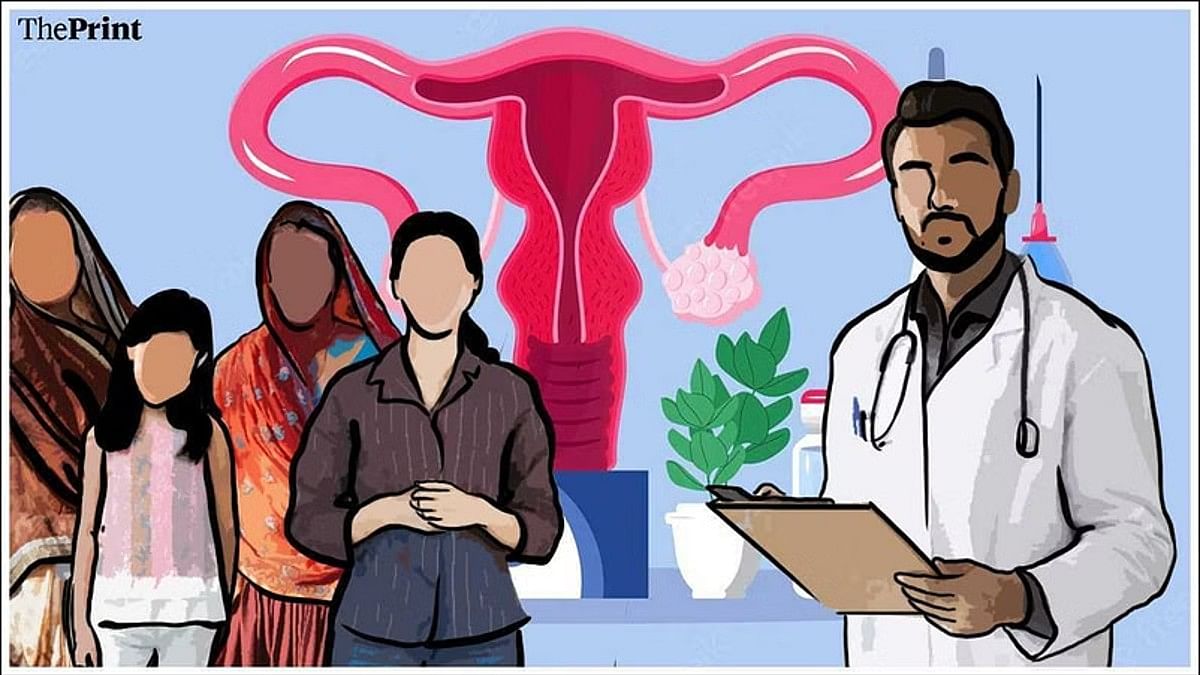New Delhi: Endometriosis, a painful gynaecological disease characterised by severe life-impacting pain, afflicts nearly 43 million women in India and its management should be included in the central government’s flagship health insurance scheme, a qualitative study on the chronic condition has advised.
The study, carried out by researchers associated with the Delhi-based The George Institute for Global Health India in collaboration with partners from the Indian Council of Medical Research (ICMR) and the National Institute For Research In Reproductive and Child Health and University of Oxford, UK, has been released as a research brief.
Noting that endometriosis is not prioritised as a public health concern in the country, researchers underlined the sobering impact of the disease on both women and their male partners and how they face challenges in leading normal lives. “It impacts both women and their male partners in different ways — from psychological to financial… (but) the impact on women is significantly more than the impact on men,” the study said.
The researchers have recommended national guidelines for early diagnosis of endometriosis and its inclusion in the Reproductive, Maternal, Newborn, Child and Adolescent Health Programme (RMNCH+A) under the Centre’s National Health Mission.
Noting the diagnostic delays and impact of endometriosis on the normal lives of both women suffering from endometriosis as well as their partners, the study has suggested a need for ensuring that endometriosis is prioritised as a public health concern.
“In addition, future research should also be undertaken to assess economic burden of endometriosis, which may guide policy to include it under centrally sponsored health insurance scheme known as Pradhan Mantri Jan Arogya Yojana (PM-JAY),” it said.
Under the Union government’s PM-JAY scheme, cashless hospitalisation benefit of up to Rs 5 lakh is offered to nearly 10 crore families or 50 crore individuals for secondary- and tertiary-level healthcare.
Dr Preety Rajbangshi, senior research fellow at The George Institute, who is the lead researcher for the study, said that endometriosis, as a public health challenge, is at par with some non-communicable diseases such as diabetes — but it was not a priority, mainly because it was a gendered condition. She added that endometriosis was largely dismissed as a “period pain” and normalised in our society.
“The sad part is that within the government’s focus on women’s health, the primary focus is on maternal health which relates to pregnancy and childbirth but gynaecological morbidities such as polycystic ovary syndrome (PCOS), polycystic ovarian disease (PCOD) and endometriosis are largely ignored,” she told ThePrint.
Also read: Cervarix to Cervavac: A look at cervical cancer vaccines available in India & how much they cost
‘Little attention on endometriosis’
According to the World Health Organisation, endometriosis affects roughly 10 percent (or 190 million) of women and girls of reproductive age globally.
It is a chronic disease associated with severe, life-impacting pain during periods, sexual intercourse, bowel movements or urination, chronic pelvic pain, abdominal bloating, nausea, fatigue, and sometimes depression, anxiety, and infertility in up to 30-50 percent of women affected.
Hormonal changes in the body during the monthly cycle cause the cells in the endometrial-like tissue to grow, and then break down and bleed into places where it cannot escape.
While menstrual blood leaves the body during menstruation, this blood remains inside, leading to inflammation and formation of scar tissue. This scar tissue can form adhesions that can cause severe pelvic pain.
And while there is no cure for the condition, treatments to manage endometriosis can vary based on the severity of symptoms and whether pregnancy was desired.
Non-steroidal anti-inflammatory drugs (NSAIDs) and analgesics (painkillers) like ibuprofen and naproxen are, for instance, often used to treat pain but hormonal medicines like GnRH-analogues and contraceptive methods — in women who may not be trying for pregnancy — can also help control the pain.
Also, surgery is sometimes used to remove endometriosis lesions, adhesions and scar tissues, though in most cases, the condition recurs a few years after the procedure, Rajbangshi said.
“Gynaecological morbidities such as endometriosis affect a substantial proportion of women but receive little attention globally. Given the chronic nature of endometriosis and its potential impact on all aspects of a woman’s life and those around her, the condition is worthy of policy inquiry and further research,” the latest research brief said.
“However, unlike many other chronic illnesses, governments globally as well as in India have paid little to no attention to endometriosis, while funding for research has remained woefully inadequate,” it further said.
(Edited by Tikli Basu)
Also read: What is the ‘women’s health gap’ and how to close it

